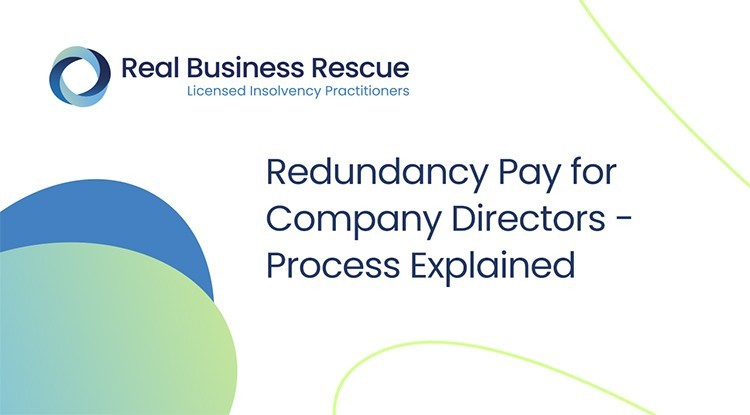Clarified: If a Company Goes Bust Who Pays Redundancy in the UK?
Clarified: If a Company Goes Bust Who Pays Redundancy in the UK?
Blog Article
Checking Out the Interaction In Between Company Redundancy and Organizational Flexibility for Future Development
In the vibrant landscape of today's organization globe, the detailed partnership between firm redundancy and business versatility emerges as a crucial variable for sustained development and success. Firms often encounter the difficulty of striking a fragile equilibrium in between preserving a degree of redundancy to reduce threats and fostering flexibility to respond promptly to the ever-evolving market demands.
Importance of Business Redundancy
Firm redundancy is a critical aspect that enhances business durability and minimizes operational dangers. By including redundancy measures within the organizational framework, companies can much better stand up to unpredicted disruptions and fluctuations in business environment. Redundancy functions as a strategic buffer, permitting firms to adapt and react effectively to unanticipated challenges without compromising crucial operations.
One trick facet of the importance of firm redundancy is its duty in guaranteeing connection throughout times of crisis. When confronted with unexpected adjustments or emergencies, repetitive systems, resources, or employees can action in to preserve essential functions and avoid prevalent disturbances. This connection not only safeguards the firm's credibility and consumer trust yet additionally reduces monetary losses and functional downtime.

Methods for Organizational Versatility
One more essential technique is buying technology and facilities that can sustain versatility and scalability. Implementing electronic devices, automation, and data analytics can enhance operations, boost efficiency, and provide beneficial insights for educated decision-making. Furthermore, producing versatile organizational frameworks that enable quick changes to market dynamics and client requirements is essential for remaining affordable in a quickly progressing atmosphere. By proactively identifying possible disturbances and opportunities, companies can proactively thrive and adapt in an ever-changing company landscape.
Balancing Redundancy and Adaptability
Accomplishing a harmonious stability in between functional redundancy and business versatility is paramount in navigating the intricacies of a vibrant business setting. Striking the best equilibrium in between redundancy and versatility is a fragile procedure that requires a deep understanding of the organization's goals, sector characteristics, and threat resistance.
To achieve this equilibrium, companies need to conduct normal assessments of useful reference their procedures to identify locations where redundancy is necessary for threat reduction and where adaptability can drive advancement and growth. Applying adaptable frameworks, fostering a culture of constant knowing and enhancement, and urging open communication across all levels of the company are crucial strategies to harmonize redundancy and flexibility efficiently. By aligning these two vital elements, companies can position themselves for sustainable development and success in an ever-changing service landscape.
Situation Researches on Adaptation Success
In examining instances of successful organizational adaptation, it becomes apparent that the interaction in between operational redundancy and flexibility is a defining element in shaping resistant services. A DVD rental our website solution, Netflix demonstrated remarkable flexibility by transitioning into a streaming system when digitalization interfered with the sector. These instance studies highlight the significance of operational redundancy coupled with organizational adaptability in promoting long-lasting growth and competition.
Structure Resilience for Future Growth
Building resilience for future development calls for a critical positioning of functional processes with market dynamics and emerging trends. Business need to adapt to changing settings by fostering a society of flexibility, technology, and constant renovation. Strength entails not just recovering from obstacles yet likewise proactively getting ready for future obstacles. One essential aspect of structure strength is buying durable danger monitoring strategies to mitigate potential disturbances. This consists of situation preparation, branching out supply chains, and creating backup prepare for various backups (who pays redundancy money).
Additionally, cultivating strong relationships with stakeholders, such as customers, employees, suppliers, and the neighborhood, is important for preserving and weathering unpredictabilities count on and assistance during rough times. Reliable interaction and transparency play a crucial duty in building strength, as they help assist in and align expectations partnership in navigating unpredictabilities.
In addition, organizations need to focus on learning and growth efforts to upskill workers and outfit them with the essential tools to adjust to transforming scenarios. By purchasing their labor force, companies can improve their adaptability and agility, ultimately strengthening see post their resilience for lasting future development.
Final Thought

In the dynamic landscape of today's service world, the elaborate partnership between company redundancy and organizational flexibility emerges as a crucial element for sustained growth and success. Business often face the difficulty of striking a delicate equilibrium between preserving a level of redundancy to alleviate threats and cultivating versatility to respond quickly to the ever-evolving market needs.To achieve this equilibrium, firms require to carry out normal evaluations of their procedures to identify areas where redundancy is required for threat reduction and where adaptability can drive development and development.In conclusion, the interaction between firm redundancy and business adaptability is important for future growth. Structure resilience with a combination of redundancy and adaptability will certainly make certain that business are prepared for the challenges of the future.
Report this page